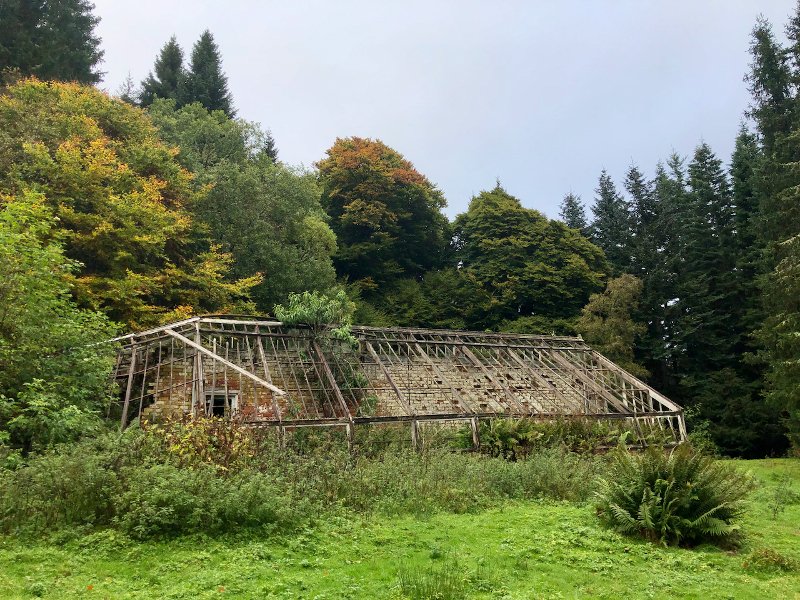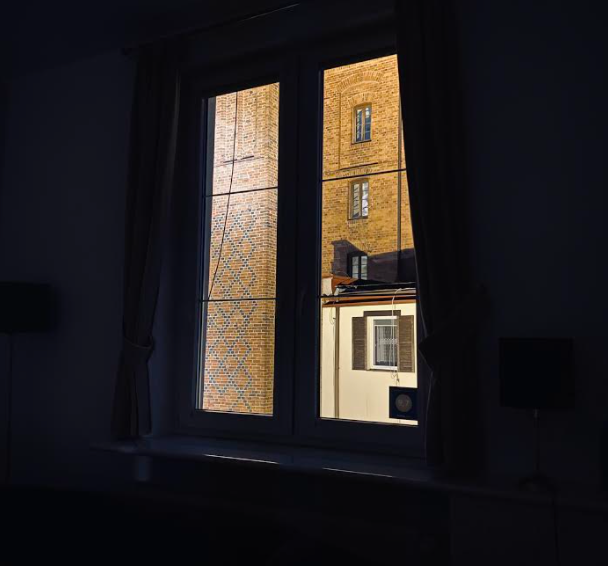A Hidden Glen
/By Ian Grosz:
We returned to a cottage we’d first rented twenty years before. Hardly anything had changed. There were a few modern scatter cushions on the same old armchair; a new washing machine and sink unit, but it was the same bowed, pinewood ceiling and the same, thick stone walls; the heavy lintel above the fireplace; the same broken clock and faded landscape pictures on the walls; the same, old map of the glen hanging by the stairs up to the mezzanine bedroom. On the shelf beneath the sash and case window looking out to the pines that line the rushing burn coming down from the hills, was a guest comments book still with our entries from twenty years previous. We sat there, reading messages from ourselves from another lifetime.
The cottage was once the laundry for the main house of an estate belonging to the Ogilvy family, hidden away down Glen Prosen with the evocative name of Balnaboth. Like most Highland estates, with farming and shooting no longer bringing in the revenues they once had, many of the properties had been given over to holiday lets. Even the house itself was now on Airbnb; but when we had first come here the family still lived in one of the two main wings. Their dogs would come to the cottage and scratch at the glass panes of the door to take us for a walk in the mornings: an eager west highland terrier named Una and a low flying, long-haired dachshund whose backside was always tangled up with pine twigs and fir cones. They’d take us on a tour of the grounds, chasing the resident peacocks and barking at the squirrels. The dogs are long-since gone, but the scratches from their morning wake-up call on the glass of the door are still there, revealing themselves when caught in the low autumn light filtering through the trees.
There was a thick mist when we arrived, the estate’s trees materialising out of the landscape as we followed the long, single-track road that winds its way up the glen from Kirriemuir, a small country town of red sandstone and the birthplace of the Peter Pan author J.M. Barrie. Barrie had returned frequently to spend some of his holidays away from London in the glens, and was buried in the town’s cemetery. Arriving at the cottage we settled our things; the years rolling back with that curious feeling of never having left. We jammed our weeks’ worth of food into the small fridge and, remembering the dogs, we took a stroll around the grounds to re-familiarise ourselves; the mist clinging to our clothes as we walked back down the track, past the now empty main house with its bright orange-yellow wash of lime rendering and its accumulated memories.
There has been some form of house at Balnaboth since the thirteenth-century, its original name stemming from Baile nam Bochd – the Stead of the Poor – but in its present form is thought to date from 1815 when Donald Ogilvy made a series of improvements, conjoining and adding to earlier buildings after taking over from his father Walter, whose Jacobite brother was exiled in France after the defeat of 1746. Barrie spent time at the house on his retreats from London literary life, meeting here with his ill-fated friend Robert Falcon Scott and later, the Scottish politician Ramsay MacDonald. MacDonald was the first Labour Prime Minister, leading a minority labour government for a short term in 1924 and again at the turn of the decade. He later headed a coalition government with a conservative majority during the early thirties, leading to his dismissal from the Labour party.
It is odd to think of a socialist being entertained at the tucked-away grand houses of the landed gentry, with associations that included the writer and high society hostess Lady Londonderry, wife of conservative cabinet minister Viscount Castlereagh, Secretary of State for the Air during the nineteen-thirties. He was central to pushing through the iconic Spitfire and Hurricane fighter aircraft to replace an outdated fleet in preparation for the war everyone knew was coming, but he had openly antisemitic leanings and known sympathies for a burgeoning Nazi Germany and was forced out of the cabinet in 1935. He died after a series of strokes in 1949, still with a porcelain figurine of an SS flag-bearer on the mantlepiece of his smoking room: a gift from Hermann Göring.
MacDonald was demonised as something of a traitor due to these associations and in his role with the coalition government during the Great Depression; the government having pursued a policy that protected the currency over maintaining assistance to the poor and unemployed. He was seen to have put his career before his principals in aligning with the Tories, but in his own eyes was putting his personal politics aside for the national good at a time of crisis, holding the country together through a dark period in history. He was a founding member of the Labour Party, with a strong reform agenda, and for the time, held some radical socialist views that looked to redress the inequalities of British society. I wonder how much he might have confided in his friend Barrie in the years leading up to the difficult period of the Depression.
Born out of wedlock to a farm labourer and housemaid at a farm in Lossiemouth and into a culture of strict nineteenth-century Presbyterianism, he got off to an inauspicious start. The prejudices of his religion would set tongues wagging, but the class system and the inequality of the British state was a very real barrier, there to keep folk in their place and the ruling classes in theirs. His parents never married and he was brought up in the Free Church, but became a teaching assistant, enabling him eventually to move to Bristol to take up a position with a philanthropic clergyman. He later moved to London where, after a period of unemployment, he took up a position as a clerk and deepened his interest and involvement in socialism.
In 1887, he witnessed the ‘Bloody Sunday’ of Trafalgar Square, when marchers protesting against unemployment and coercion in Ireland clashed with the British Army, inspiring a later career as a freelance journalist that began with an article in The Pall Mall Gazette entitled ‘Remember Trafalgar Square: Tory Terrorism in 1887’. Throughout the late eighteen-hundreds he continued to educate himself at The Birkbeck Institute, now the University of London, and in 1888 took employment as private secretary to Thomas Lough, a wealthy tea-merchant and a radical Anglo-Irish politician, opening doors for MacDonald that would secure his own, later political career.
In MacDonald’s early courting of celebrity and his frequenting of the grand houses of the Tory heirs, I saw perhaps more than a move to influence and maybe a lingering deference to the upper classes; a need in him to prove his ascendancy; to gain approval and validity from those in the very establishment he wished to reform. He was a supporter for Home Rule in Scotland, declaring in a paper published in 1921 that ‘the Anglification of Scotland has been proceeding apace to the damage of its education, its music, its literature, its genius, and the generation that is growing up under this influence is uprooted from its past.’ Wandering around the old estate grounds a hundred years on, his legacy felt increasingly present.
We crossed a low wooden bridge spanning the burn, which was full and fast and courses its peaty way down from the hills like a torrent of frothy Coca-Cola. Following a muddy path through mixed woodland up a short rise into open ground again, we arrived at the old glass house that lies in ruin on a slope overlooking the burn, its timber frame mostly collapsed into its lower brickwork. A few panes of glass were still in place, but its interior was overgrown with tall ferns; a young tree reaching up through its roofless frame. An old wheelbarrow lay at rest under the shade of a nearby fir tree, as though the gardener who had once tended to the vegetables had simply downed tools and walked away.
A sense of time and time’s passing was all around us; a sense of decay, and yet it was a comforting sort of sadness held within the crumbling walls of the garden and in the collapsed frame of the Victorian glass house. It felt deliberate, almost staged in its picturesqueness, as if arranged for the sentimental eye of the romantic; the grounds slowly but surely giving way to nature and its landowners democratising a once private estate. I felt it was part of the appeal of the place, this fading grandeur; a reminder of the inevitable certainty of time and change.
***
Ian Grosz is a writer based in the northeast of Scotland. Drawing largely from the landscape, he is published across a range of magazines and journals both in print and online. His writing features in the forthcoming book Four Rivers Deep, a collaborative deep mapping project that explores the rivers Don and Dee in northeast Scotland and the Swan and Canning rivers in southwest Australia, due for publication by UWA Press in January 2022. Ian is currently working on a personal, narrative nonfiction book-project exploring the ways in which landscapes shape a sense of place and identity.





